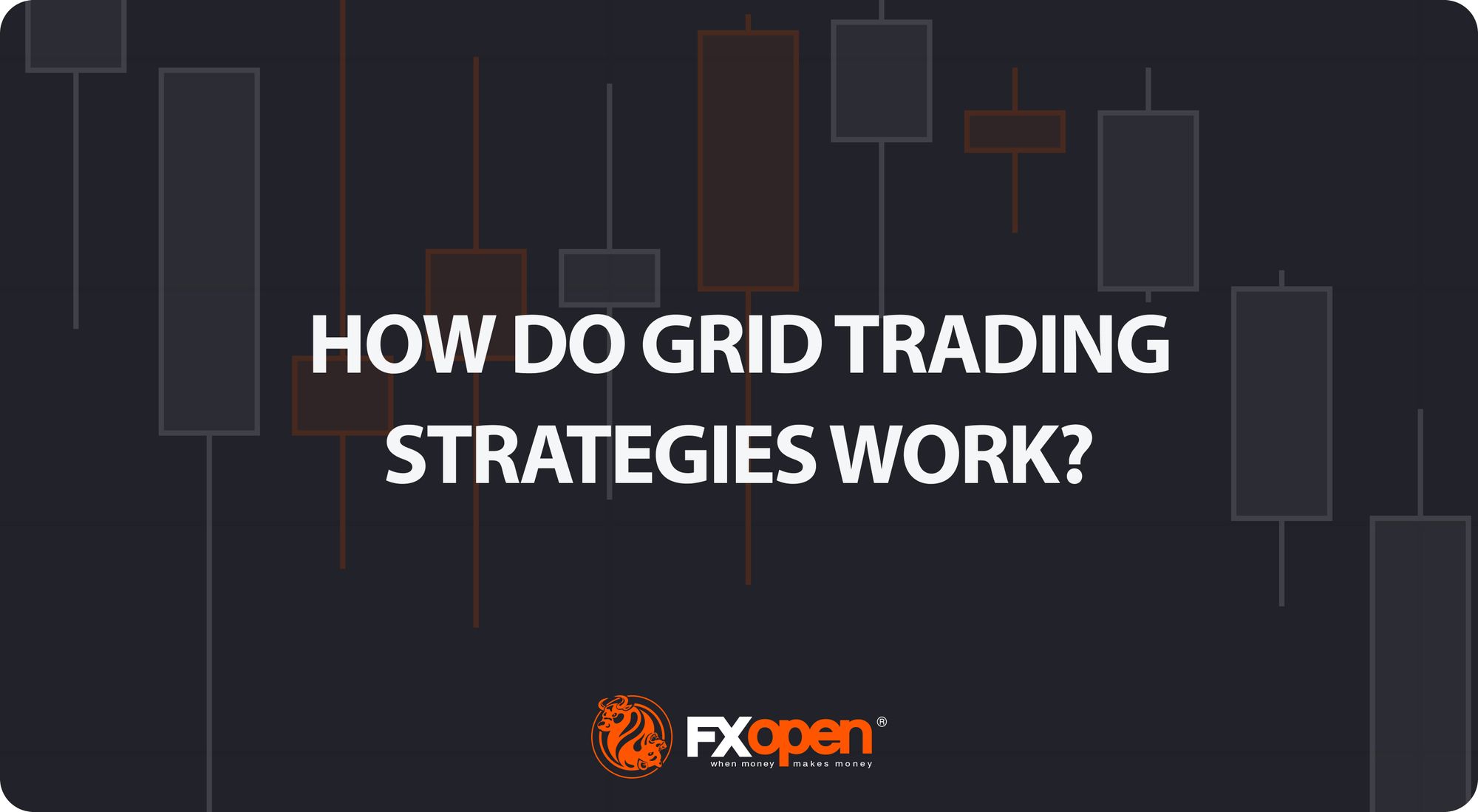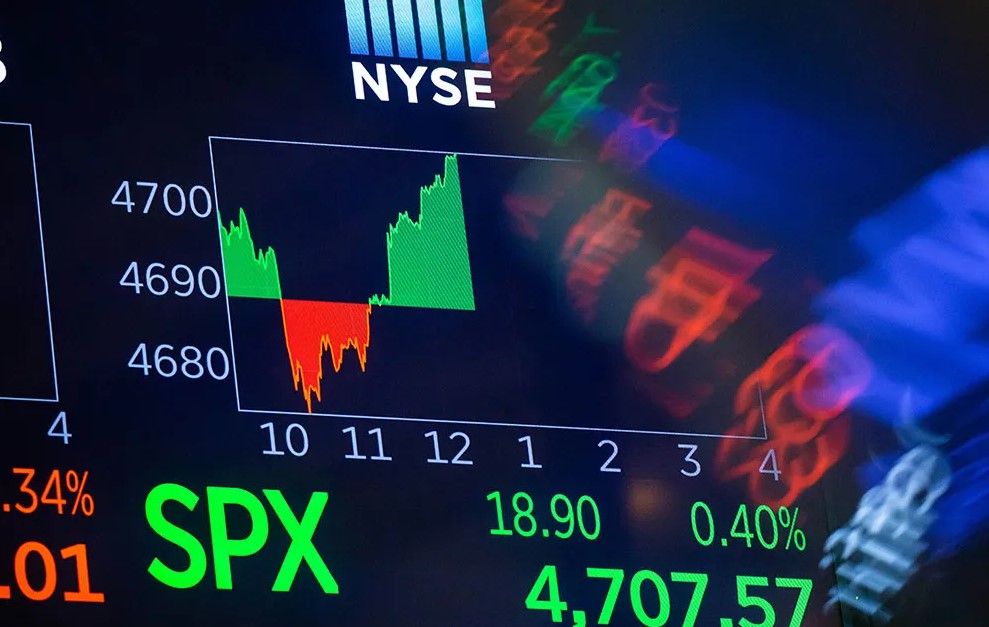FXOpen

Grid trading stands as a distinctive strategy within the trading realm, offering a structured approach to navigating market volatility. By strategically placing buy and sell orders at predefined intervals, this method eschews the need to determine the market direction, instead harnessing the inherent fluctuations of the market. This FXOpen article delves into the intricacies of grid trading, illuminating its mechanics and the nuanced grid strategies traders use.
Understanding Grid Trading
Grid trading is a strategic approach to forex and other financial markets, where traders place buy and sell orders at predetermined intervals above and below a base price, creating a grid of orders. This method does not require traders to determine market directions but instead relies on market volatility to generate returns. The essence of grid trading lies in its relative simplicity and in leveraging the natural ebb and flow of price movements.
At its core, grid trading involves setting up a sequence of orders that are triggered when prices hit certain levels. The strategy is designed to take advantage of normal price volatility within a specific range or trend by entering and exiting trades at predetermined levels. For instance, a trader sets up a trend-following grid on EUR/USD, placing buy orders above the current price at regular intervals and sell orders below. As the trend progresses, orders are activated, and the trader aims to capture returns from these movements.
A critical advantage of grid trading is its flexibility. It can be adapted to suit various market conditions, whether the market is trending or moving sideways. In trending markets, the grid can be adjusted to follow the trend, potentially increasing returns as the price moves in a specific direction. In range-bound markets, the grid capitalises on price reversals at each level.
However, grid trading also requires careful risk management. The nature of the strategy means that without proper oversight, adverse market movements can lead to significant losses. Setting stop-loss orders for individual trades and monitoring overall exposure are essential practices to mitigate these risks.
Grid Trading: An Example
Consider a trader who decides to employ a grid trading strategy on the EUR/USD pair, observing that it has been fluctuating within a tight range of 1.1000 to 1.1100. The trader selects 1.1050 as the base price, identifying it as the midpoint of the current trading range.
To set up the grid, the trader places buy orders at intervals below the base price, for example, at 1.1040, 1.1030, and 1.1020. Simultaneously, sell orders are placed at intervals above the base price, at 1.1060, 1.1070, and 1.1080. The strategy here is to capitalise on the currency pair's natural price movements within this established range.
As the price fluctuates, hitting each buy order triggers a purchase at a lower price, aiming to sell as the price rebounds. Conversely, each sell order executes a sale at a higher price, buying back the short position as the price drops again.
A stop loss is typically set beyond the range’s upper and lower bound, while profits may be taken incrementally as the price fluctuates around the midpoint. Properly managed, this approach allows the trader to systematically generate returns in a range-bound market without needing to determine the direction of the next price movement.
Grid Trading Strategies
Broadly speaking, grid trading strategies come in two flavours: range-based and trend-following. Below, we explore both. To gain an in-depth understanding, consider applying the steps below on real-time charts in FXOpen’s free TickTrader platform.
Range-Based Grid Strategy
In a range-bound forex or cryptocurrency* market, where prices oscillate between a defined high and low, a basic range-based grid strategy might be quite effective. This approach leverages the market's natural tendency to fluctuate within bounds, allowing traders to capitalise on small, consistent movements rather than large trends.
Identifying a trading range is the first step, where the trader marks the highest and lowest prices over a certain period. From this range, the midpoint is determined, serving as a reference for setting up buy and sell limit orders.
Typically, traders might choose to place four or five orders on either side of the midpoint, though some may select more. The spacing between orders is calculated by dividing the distance from the midpoint to the range's high or low by the number of orders, adjusting the spacing slightly.
Entry
- Buy orders are placed below the midpoint at intervals determined by the spacing calculation.
- Sell orders are set above the midpoint, also spaced according to the initial calculation.
Stop Loss
- Stop losses for each order are placed just beyond the range's established high or low to protect against significant market moves outside the expected range.
Take Profit
- According to the theory, traders prefer to take profits as price reaches the opposing order.
Trend-Following Grid Strategy
In a trend-following grid strategy, the primary goal is to align with the market's direction, leveraging sustained movements to accumulate a position that grows as the trend progresses. This approach requires the trader to first identify the prevailing trend, which can be achieved through market structure analysis or the use of indicators such as moving averages, momentum indicators, or the Average Directional Index (ADX).
Upon determining the trend, the current price acts as a base from which buy stop (in an uptrend) or sell stop (in a downtrend) orders are placed at fixed intervals. The intervals may vary depending on the trader’s preference; a popular method involves using the Average True Range (ATR) to set these distances.
For example, if using the ATR, a trader might place orders at intervals of 2x the ATR value from the base price, utilising the ATR’s reflection of market volatility to gauge appropriate spacing between orders.
Entry
- Orders may be placed in the direction of the trend at intervals determined by the trader, such as a set number of pips or a multiple of the ATR from the base price, enabling a balanced expansion of the position as the trend continues.
Stop Loss
- Setting a stop loss in a trend-following grid strategy varies; some traders prefer to trail a stop loss beyond the last entry point to protect gains, while others set it just beyond the base price to guard against sudden reversals.
Take Profit
- Profit-taking can be challenging in a trend-following grid; according to the theory, one approach is to close all trades after a predetermined number of orders are reached (e.g. if using four orders, closing the trade when the fifth order is reached), effectively capturing returns before a potential reversal.
- Another method may be to take profits upon the opening of the next order in the sequence, which limits both potential gains and losses while reallocating capital for future trades.
Risk Management in Grid Trading
Risk management is a critical aspect of grid trading, where the systematic approach to placing multiple orders can potentially amplify both returns and losses. Given that grid systems compound entries, the disciplined use of stop losses becomes essential to cap potential losses. This is particularly true in volatile markets. When grid trading in cryptocurrencies*, for example, rapid price movements can quickly leave a trader overexposed without careful risk management.
Another crucial consideration is the spacing between orders. Properly calibrated spacing can help manage exposure by preventing the accumulation of too many positions too quickly in a market that is moving against the trader's assumptions. Similarly, the sizing of each trade must be carefully considered to not only manage exposure but also ensure that margin requirements are met without overleveraging the account.
Diversification across different instruments or markets is also an important part of a grid strategy. By not putting all eggs in one basket, traders can potentially reduce the impact of a significant move in any single market.
Many grid trading strategies are automated, allowing for the execution of this strategy at a scale and speed that would be challenging manually. However, using grid trading bots introduces its own complexities, including the need for constant monitoring to ensure that the algorithm behaves as expected in changing market conditions. It also requires a robust understanding of the automated system's parameters to avoid unintended exposure.
The Bottom Line
Grid trading may offer a unique avenue for traders to exploit market volatility effectively. By understanding and applying the strategies outlined, traders may navigate the forex market with increased confidence. For those looking to put these strategies into practice, opening an FXOpen account provides the ideal platform to explore grid trading's potential, backed by a broker known for its robust support and advanced trading tools.
FAQs
What Is Grid Trading in Forex?
Grid trading in forex is a strategy where a trader places buy and sell orders at predetermined intervals around a base price. It capitalises on the natural market volatility by automatically executing trades without the need to analyse market directions. This approach is designed to generate returns from the fluctuations of financial assets.
How Does Grid Trading Work?
Grid trading works by setting up a network of buy and sell orders spaced at regular intervals above and below a starting price point. As prices fluctuate, these orders are triggered, potentially allowing traders to take advantage of small price movements. The strategy can be adjusted for different market conditions, aiming to continuously enter and exit trades based on the established grid pattern.
What Is Spot Grid Trading?
Spot grid trading is a specific application of grid trading strategies in the spot market, where financial instruments are bought and sold for immediate delivery. In forex, it refers to buying and selling currency pairs at their current market price, using a grid strategy to take advantage of spot market volatility.
What Is a Grid Trading Strategy?
A grid trading strategy is a systematic method of placing a series of orders at incrementally increasing and decreasing prices. This strategy is designed to execute trades automatically as the market moves, aiming to secure returns from these movements without needing to determine the market's direction.
How Risky Is Grid Trading?
Grid trading can be risky due to its potential to compound losses, especially in highly volatile markets. The strategy requires careful management of stop losses, order spacing, and trade sizing to mitigate exposure. While automation of grid trading can help manage these risks, it also introduces the need for constant monitoring and understanding of the system to prevent significant losses.
*At FXOpen UK and FXOpen AU, Cryptocurrency CFDs are only available for trading by those clients categorised as Professional clients under FCA Rules and Professional clients under ASIC Rules, respectively. They are not available for trading by Retail clients.
This article represents the opinion of the Companies operating under the FXOpen brand only. It is not to be construed as an offer, solicitation, or recommendation with respect to products and services provided by the Companies operating under the FXOpen brand, nor is it to be considered financial advice.






